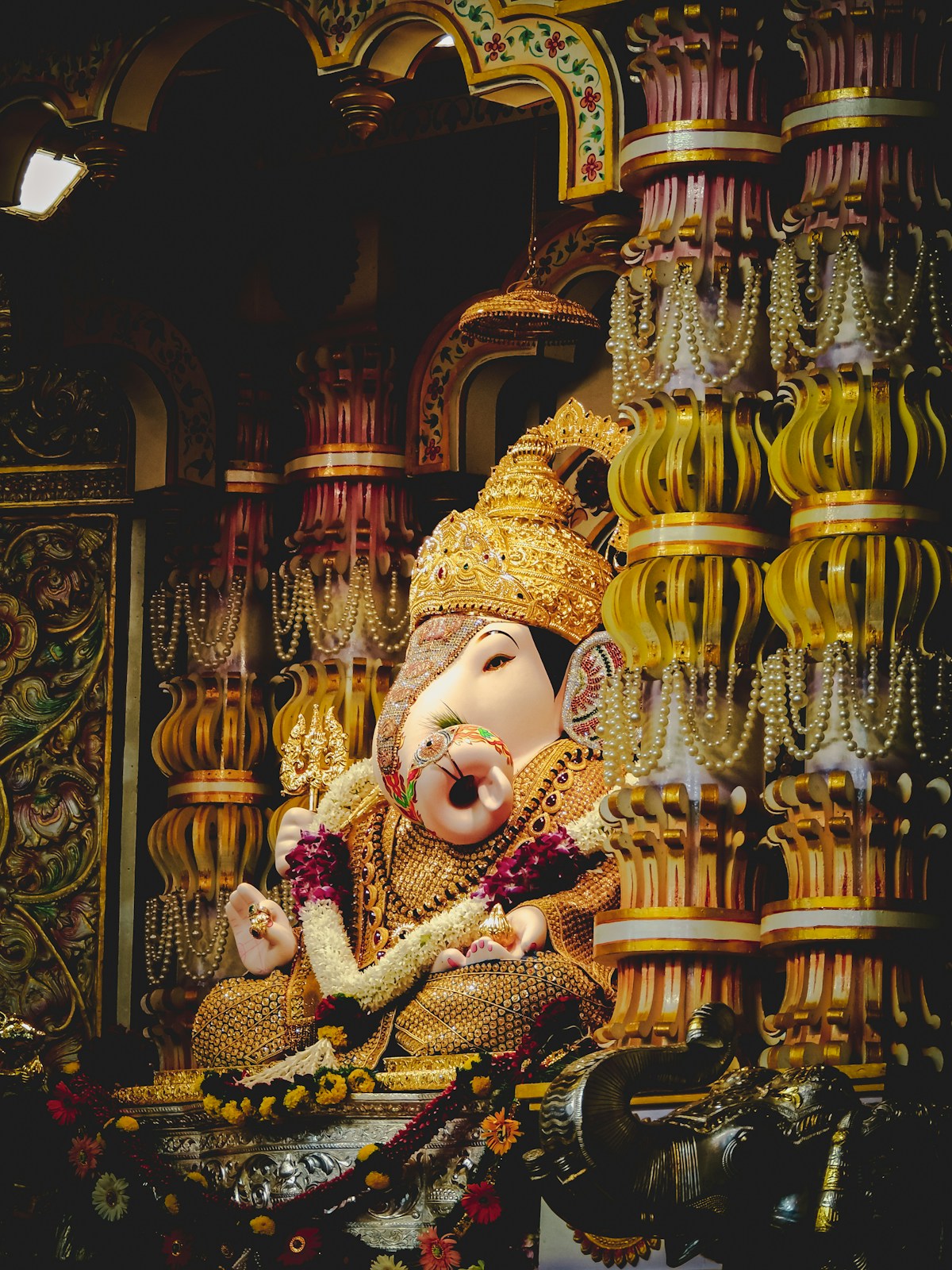8 short stories about Lord Ganesha

Ganesh Chaturthi, a popular festival observed across India (particularly in Maharashtra) begins today, September 10th, this year. On this occasion, giant Ganesha statues are made months in advance, and gorgeous pandals are decked to commemorate the 10-day event.
According to Hindu mythology, Ganesha is the Hindu god of new beginnings, success, and wisdom. He is also referred to as the remover of all obstacles (Vighnaharta).
Ganesh Chaturthi, also known as Vinayaka Chaturti or Ganeshotsav, has a long and illustrious history. The festival commemorates Ganesha’s arrival from Kailash Parvat, or Mount Kailash, as per the Hindu belief.
So, while devotees in India and all around the world pray to Ganesh to take away all their hurdles and celebrate the festival, let’s look at some short and interesting stories about his life.
How Ganesha was born
This is the most well-known of the various stories about Lord Ganesha’s birth. When Parvati went to take a bath one day, she told Nandi to keep an eye on the door and not let anyone in. But, being Lord Shiva’s dedicated servant, he did not prevent Shiva from entering. Because she didn’t have somebody as loyal to her as Nandi was to Shiva, she gathered the turmeric paste she used to clean her body with, molded it into a boy, and breathed life into it. And hence, Ganesha was born.
The elephant head
Ganesha was born when Lord Shiva was away. When Ganesha refused Lord Shiva admittance into his residence because Goddess Parvati was bathing inside, Shiva became enraged and beheaded Ganesha’s head. When Parvati learned of this, she was enraged and decided to destroy the world. She was stopped by Shiva who realized his mistake and gave Ganesha a new life. According to mythology, when Lord Brahma went out looking for an animal to replace Ganesha’s head, the first animal he came across was an elephant. As Ganesha came back to life, he was also blessed with the status of being foremost among the gods.
The God of wit and wisdom
Shiva and Parvati were once enjoying ‘the fruit of knowledge,’ which Kartikeya and Ganesha both desired. As a result, Lord Shiva issued a challenge to both of his sons, instructing them to go around the world three times and return. The fruit would go to the person who returned first. Kartikeya flew away on his peacock, but Ganesha was stuck with the small mice. So he circled around his parents three times and told them that his whole world lies in their feet. He not only won the fruit but also earned the admiration of other gods.
Ganesha wrote Mahabharata for Ved Vyas
Legend has it that sage Vyasa came to Lord Ganesha to ask for help. He wanted Ganesha to transcribe the entire epic for him, upon which Ganesha agreed but on one condition. He told Vyasa to keep reciting the verses without any pause. Now Vyasa knew Ganesha’s speed, so to avail himself a break, he told Ganesha that he will have to understand every verse before he writes it down. This way, whenever Vyasa needed a break, he would throw in a rather difficult verse.
How he came to be called Ekdant
Once, he was guarding the door for Lord Shiva when sage Parashuram came to meet him. When Ganesha denied him entry, Parashuram got angry. Known for his anger, Parshuram drew swords and began fighting with Ganesha. Ganesha lost one of his tusks in the fight and came to be called Ekdant (one-toothed).
This is another story about why he is called Ekdant. Such was Lord Ganesha’s dedication towards his work that, while transcribing the Mahabharata, he broke his pen. Without thinking twice, he broke off one of his tusks into half and began writing again.
When Ganesha’s hunger knew no bounds
Kuber, the god of wealth, was haughty and egotistical. He was very proud of his wealth and looked down on Lord Shiva for living as a sage in the mountains. One day, he went to Kailash to invite Lord Shiva and Parvati to come to his place and have dinner, while in actuality he just wanted to show off his riches to them. However, Lord Shiva had other engagements, so he asked Kuber to take Ganesha with him as he was fond of eating. But he asked hesitatingly if Kuber would be able to feed him properly. Kuber, thinking how much could a kid actually eat, agreed to take Ganesha with him.
Now was Kuber’s real test. Ganesha finished every food item in the house and asked for more! When Kuber requested that he wasn’t left with any more food, Ganesha threatened to eat his host! Panicked, Kuber rushed to Kailash begging Shiva and Parvati to tell him a way to satiate Ganesha’s hunger. Parvati smiled and gave Ganesha a tulsi (holy basil) leaf. This calmed him down and Kuber learned an invaluable lesson.
How Ganesha came to be known as the God of beginnings
Once, Ganesha was guarding the heaven (Swarga Lok) while everyone had left to attend Lord Vishnu’s wedding. When Narad Muni saw Ganesha alone, he told him that he wasn’t invited to the wedding because he was fat and ate too much. This enraged Ganesha, who sent his mouse to dig the soil from inside out and make it hollow on the way from where the marriage procession was about to pass. The army of mice dug the soil and the wheels of the chariots got stuck.
Because none of the gods could pull out the wheel, they sought assistance from a man who was passing by. He came and took Lord Ganesha’s name, and then the wheels came out and began to turn! When the gods inquired as to why he prayed to Lord Ganesha, the farmer said that he is the god of beginnings, who eliminates all obstacles. On hearing this, the gods realized their mistake. They returned to Lord Ganesha and apologized for their behavior.
How a mouse became Ganesha’s vehicle
Once, there was a demon, Gajmukhasur, who was an ardent devotee of Lord Shiva. He prayed and asked Shiva for a boon that no god or human would be able to harm him. Being benevolent, Shiva granted it to him but warned him against its misuse. Gajmukhasar, being a demon, didn’t listen and began killing people and destroying their homes. Seeing this, Shiva sent Ganesha to control him, who then turned Gajmukhasur into a mouse. And that’s how the mouse became Ganesha’s vehicle.
FRIDAY FUN FACT: Ketchup was sold in the 1830s as medicine.


